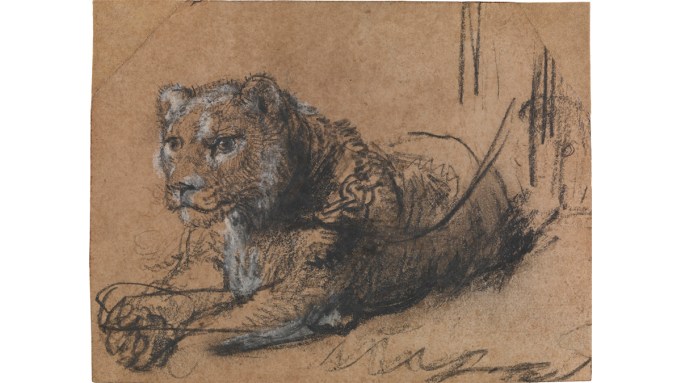A 17th-century drawing of a lion by Rembrandt could become the most expensive work on paper ever sold at auction, according to the Art Newspaper, with proceeds fittingly ear-marked for big cat conservation.
American collector and precious-metals mogul Thomas Kaplan—who has assembled the largest private collection of Rembrandts in the world—plans to part with Young Lion Resting (1638–42) sometime next year. He’s hinted at a price in the “multiples of tens” of millions. That could put it within paw’s reach of the current record for a work-on-paper: a Raphael that sold for $48 million at Sotheby’s in 2012.
(However, reaching that mark may be wishful thinking. Rembrandt’s record was set in 2009, when the painting Portrait of a Man with Arms Akimbo (1658) was sold for $33.2 million.)
Kaplan says the sale will help fund Panthera, the wildlife conservation group he founded to protect lions, snow leopards, jaguars, and the like. “Wildlife conservation is the one passion I have which surpasses Rembrandt,” he told The Art Newspaper.
It’s a rare instance of a collector hyping a price without any personal gain, unless of course you consider that the value of his 17 Rembrandt paintings—nearly half of all those in private hands—would likely rise in tandem.
The drawing is on view now at Amsterdam’s H’ART Museum (formerly the Hermitage Amsterdam, pre-Ukraine invasion), part of From Rembrandt to Vermeer: Masterpieces from The Leiden Collection, Kaplan’s private stash of Dutch Golden Age gems. The show runs through August 24 before heading to Florida in the fall.
As for the lion itself, it was likely drawn from life—complete with leash—when Rembrandt was in his 30s. Kaplan calls it “a greater interior life to a cat than most artists give to a human.” The same cat may appear in two other drawings held by the British Museum.



